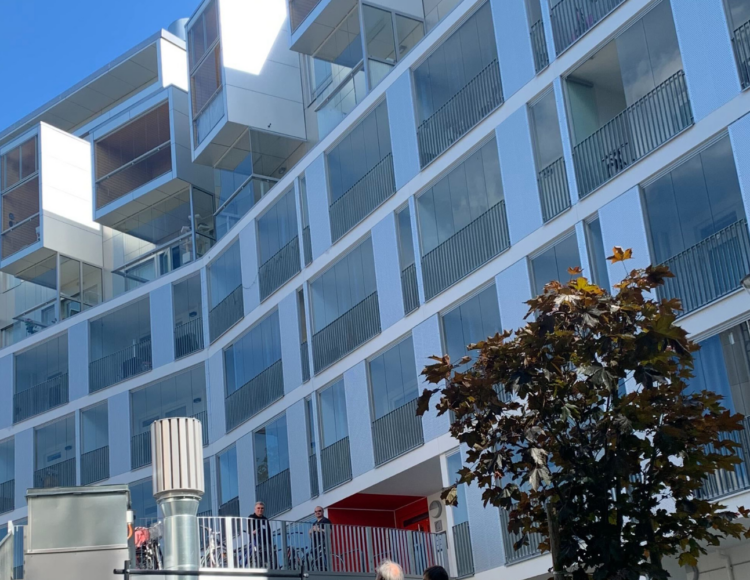On the 14th of December 2021 the European Commission launched a proposal for a recast of the Energy Performance of Buildings Directive (EPBD). CEMR (the Council of European Municipalities and Regions) and Housing Europe (the European federation of social, cooperative and public housing providers) support the ambition of the EPBD – it is beyond doubt that we need to speed up the decarbonisation of buildings across the EU.
We also need an EPBD that is effective and adapted to local resources. Both CEMR and Housing Europe represent organisations that have first-hand experience of what approaches work in practice. Moreover, the entities that both entities represent have a public mission and are not profit-driven. Therefore, we decided to come together to put forward proposals to improve the EPBD-recast, keeping the ambitions high and taking the principle of subsidiarity into account. In this position paper we make three recommendations to the European legislators for a better EPBD.
1) Use adaptability, subsidiarity and proportionality as guiding principles
(article 7, 8, 11 & annex III)
We strongly advocate that the principle of adaptability to local conditions should be a guiding principle for the EPBD. Each member state has its own characteristics, energy mix and building stock. This requires an approach that allows for local flexibility. The Commission’s proposal includes detailed provisions that go beyond the aim of the directive and ignores the principle of subsidiarity.
A clear example of this is the suggestion to centralise the energy performance for zero-emission buildings (ZEB, or class A) to be set at EU-level, without even having presented the methodology behind the proposed numerical values. This would entail undue uncertainty for property owners and take away the capacity for member states to formulate building codes according to the national and regional contexts.
The EPBD also includes detailed provisions on fire safety, accessibility, the removal of asbestos and inspection frequencies. To prevent the EPBD becoming an overall BD (Buildings Directive) we recommend leaving these issues to the member states, and regional and local governments.
2) Introduce a steady and predictable legislative framework as building renovation is a long term process (article 9 & 16)
Renovating the existing building stock is a long-term process that requires planning and a stable and predictable legislative framework. The proposed EPBD does exactly the opposite. It introduces minimum energy performance standards (MEPS) with requirements to renovate large stocks of buildings with extremely short time horizons. It also recalibrates the entire EPC scale just before MEPS is put in place.
The new label scale will enter into force by 2025. Only then building owners will know which of their buildings will have a new label G or F, while the first deadline introduced in the EPBD is already in 2027. It is technically and economically not feasible to reduce the energy consumption in only 2 years for all publicly owned buildings and privately owned non-residential buildings in class G, representing 15% of the building stock with the highest energy consumption. Neither is it feasible to renovate all F&G buildings (roughly 30% of the buildings stock) in only 5-8 years’ time.
These short time horizons do not take into account the local and regional governments’ and other property owners’ planning and need for renovation. It does not reflect the availability of skilled labour and entrepreneurs, the use of buildings, the effect on building values and property markets, and the increased costs for tenants.
Finally, the new label G will be based on the 15% worst performing buildings of the national building stock. The EPC classes will, by design, become entirely incomparable between member states, when based on relative and not absolute values.
3) Set a high standard for new construction, but allow for all types of renewable and low-carbon energy (article 7, annex III)
A new term is introduced in the proposed EPBD: a zero-emission building (ZEB). This is defined as a building with a very high energy performance, where the low amount of energy still being used is fully covered by: on-site energy from renewable sources, energy from a renewable energy community, or energy-efficient district heating.
Although the biggest challenge for the fair energy transition lies in the existing building stock, we support the introduction of a standard for new buildings, that apart from an already existing methodology for cost-optimal energy performance also introduces the consideration of the GHG impact of the energy use and building materials. We do argue however that the focus of the EPBD should be to make buildings, and the energy systems that supply them, fossil fuel-free while leaving it up to member states to decide what renewable sources will be deployed. In our view, this also includes renewable and low-carbon energy from the grid, waste energy, and waste-to-energy produced in line with the EU waste hierarchy. Recovering energy that is already generated for other purposes has an even lower environmental impact than producing new renewable energy.
Both municipalities and regions as well as the social, cooperative and public housing sector share the ambition to contribute to reaching carbon neutrality for the EU by 2050. We need an EPBD that will set the necessary outcomes and important milestones. However the EPBD should preserve the ability of the local stakeholders to create the most appropriate strategy to reach that ambition.
